
Attend a Pesticide School
Pesticide Schools are hosted by the NC State Pesticide Safety Education Program with the help of the NC Extension …



El inglés es el idioma de control de esta página. En la medida en que haya algún conflicto entre la traducción al inglés y la traducción, el inglés prevalece.
Al hacer clic en el enlace de traducción se activa un servicio de traducción gratuito para convertir la página al español. Al igual que con cualquier traducción por Internet, la conversión no es sensible al contexto y puede que no traduzca el texto en su significado original. NC State Extension no garantiza la exactitud del texto traducido. Por favor, tenga en cuenta que algunas aplicaciones y/o servicios pueden no funcionar como se espera cuando se traducen.
Inglês é o idioma de controle desta página. Na medida que haja algum conflito entre o texto original em Inglês e a tradução, o Inglês prevalece.
Ao clicar no link de tradução, um serviço gratuito de tradução será ativado para converter a página para o Português. Como em qualquer tradução pela internet, a conversão não é sensivel ao contexto e pode não ocorrer a tradução para o significado orginal. O serviço de Extensão da Carolina do Norte (NC State Extension) não garante a exatidão do texto traduzido. Por favor, observe que algumas funções ou serviços podem não funcionar como esperado após a tradução.
English is the controlling language of this page. To the extent there is any conflict between the English text and the translation, English controls.
Clicking on the translation link activates a free translation service to convert the page to Spanish. As with any Internet translation, the conversion is not context-sensitive and may not translate the text to its original meaning. NC State Extension does not guarantee the accuracy of the translated text. Please note that some applications and/or services may not function as expected when translated.
Collapse ▲
Pesticide Schools are hosted by the NC State Pesticide Safety Education Program with the help of the NC Extension …
Youth Flock Owners: Please read the latest update from the North Carolina Department of Agriculture and Consumer Services released on …
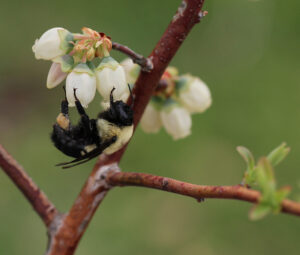
The Chatham County Center of North Carolina Cooperative Extension conducted two blueberry production webinars in November-December 2021. NC State …
The US Environmental Protection Agency requires that all individuals working with pesticides labeled for respiratory protection complete the following …

How can you encourage farmworkers and their families to use practices that minimize the risk of pesticide exposure? The …
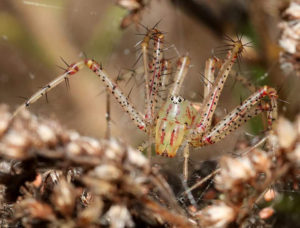
Chatham Conservation Partnership conducted a webinar on SPIDERS on October 15, 2020, and we had a great turnout of about 130 …
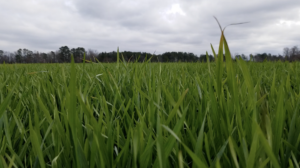
Are you planting wheat this fall? Join us for part 1 of our “Wheat Production Series” on September 25, 2020, from …
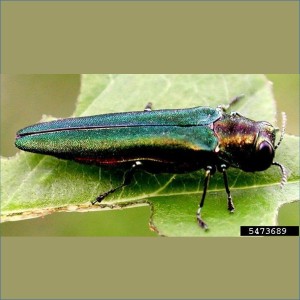
The emerald ash borer, a beautiful but extremely destructive, exotic insect pest, has now been detected in North Carolina. …
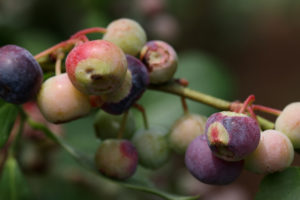
I recently visited a small Chatham County blueberry farm and found some of the bushes were infected with Exobasidium, …

Twospotted spider mites are probably the most common spider mite species to damage ornamental plants, fruits, vegetables, and others. Twospotted …

Eastern tent caterpillars are common native insects that create silk webs or ‘tents’ in the branch crotches of some …
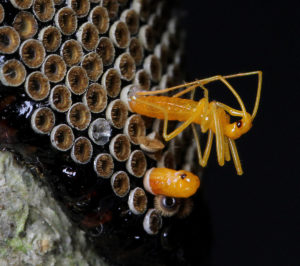
The wheel bug, Arilus cristatus, is North Carolina’s largest assassin bug. It gets its name from the prominent spiny …

Photos by Debbie Roos, N.C. Cooperative Extension of Chatham County In late 2008, I planted a demonstration pollinator garden at Chatham …
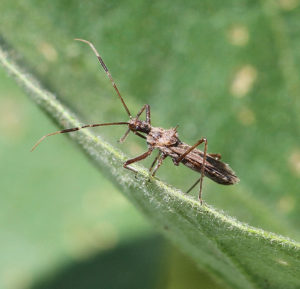
One of my duties as an Agriculture Agent for North Carolina Cooperative Extension is to help farmers when they …
Safe pesticide storage is essential, especially in disaster situations. Improperly stored pesticide products can pose significant threats to humans …
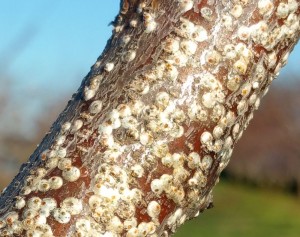
If you have fruit trees, now is a good time to inspect them for scale insects. White peach scale …
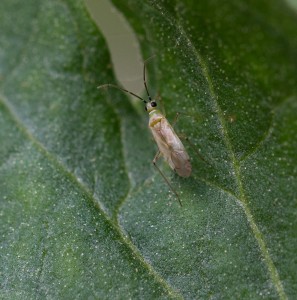
I got a call from a Chatham County greenhouse tomato grower recently about an insect flying around that they had …

Farmers and gardeners who grow blueberries may notice damage to the developing berries caused by the cranberry fruitworm. The …

This soybean disease information factsheet describes the symptoms and disease cycle of the cowpea chlorotic …

Tobacco ringspot virus is a disease of soybean in North Carolina. This factsheet offers information …

This soybean disease factsheet covers aerial web blight, a generally minor disease of soybean in …
This factsheet discusses bacterial blight of soybean in North Carolina.
The symptoms and management of white mold, an important cause of yield loss in soybean …

This factsheet offers information on target spot in soybean production in North Carolina.

This factsheet offers information on the signs, disease cycle, and management of soybean vein necrosis …

Frogeye leaf spot (FLS) of soybean is a common foliar disease in North Carolina with …